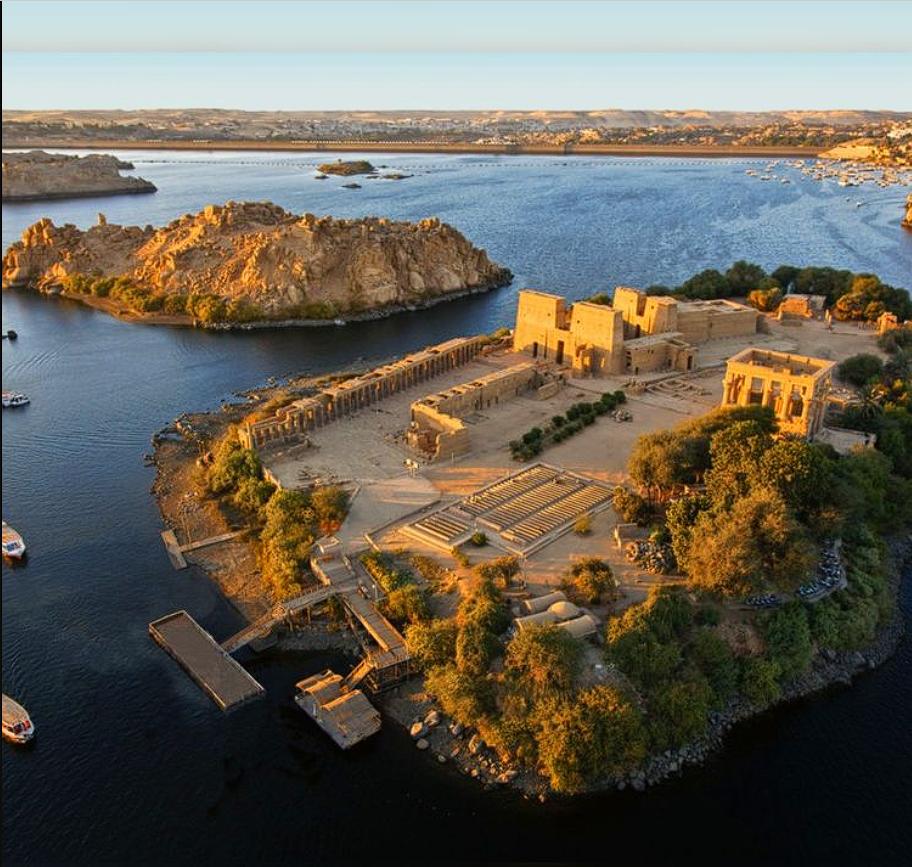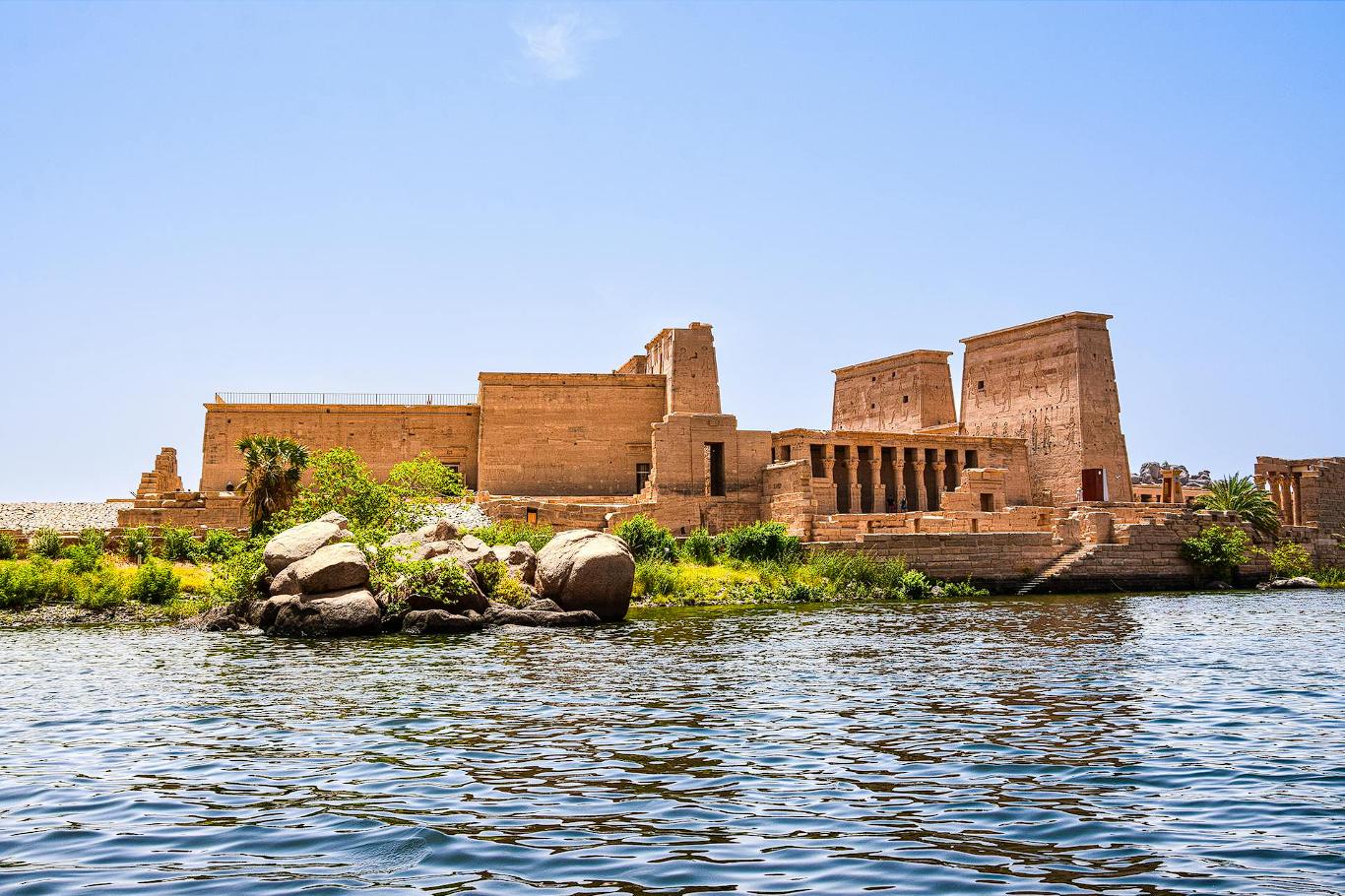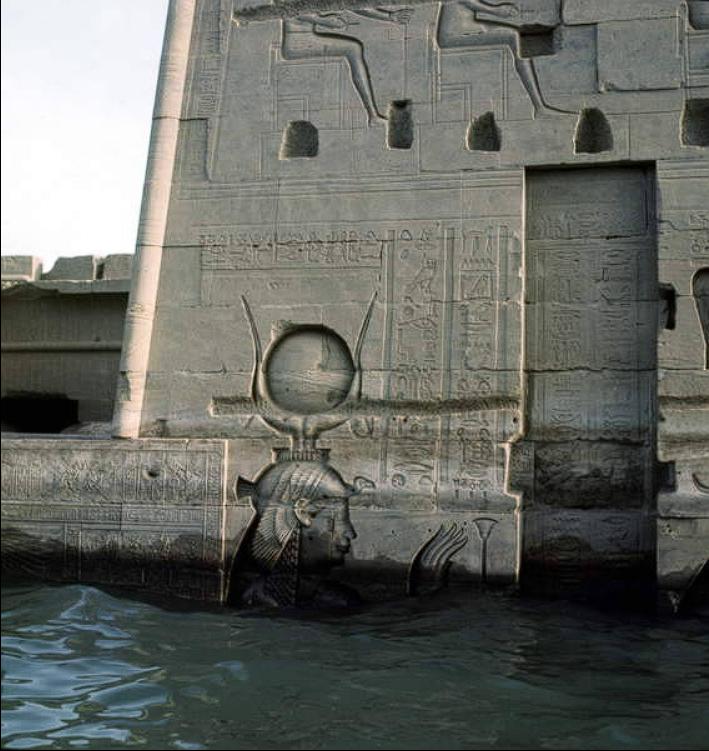Once a hauntingly beautiful relic partially submerged by the Nile’s floodwaters, the Philae Temple Complex now stands in its full glory on Agilkia Island. Originally built on Philae Island, this sacred site, dedicated to the goddess Isis, faced total submersion with the construction of the Aswan High Dam. However, a remarkable UNESCO-led effort saved this architectural masterpiece, relocating it block by block. Today, Philae remains one of Egypt’s most breathtaking sites, a testament to both ancient ingenuity and modern conservation.
Philae’s Origins: A Sacred Site on the Nile
- A Temple to Isis: Ancient Reverence:
- The Philae Temple Complex, with its most revered structure dedicated to Isis, was a site of immense religious significance in ancient Egypt. Its location near the First Cataract made it a crucial point for Nile navigation and spiritual pilgrimage.
- Architectural Evolution: From Nectanebo to the Romans:
- The temple’s construction began under Nectanebo I (380–362 BCE) and was expanded by the Ptolemies and Romans, resulting in a rich tapestry of architectural styles and historical influences.
- Grand Colonnaded Approach: River Access:
- The temple’s grand colonnaded approach from the river highlighted its accessibility and importance as a destination for both religious ceremonies and river travelers.
Philae’s Rescue: An International Conservation Effort
- Threat of Submersion: The Aswan Dams:
- The construction of the Aswan Low Dam in 1902 led to periodic inundation of the temple complex. The impending completion of the Aswan High Dam posed an even greater threat: total submersion.
- UNESCO’s Intervention: A Monumental Task:
- In an unprecedented international effort led by UNESCO, the Philae Temple Complex was meticulously dismantled, block by block, and relocated to Agilkia Island. This remarkable feat of engineering and conservation saved the temple from certain destruction.
- Relocation and Preservation: A Triumph of Conservation:
- The successful relocation of the Philae Temple Complex is a testament to the dedication and expertise of the conservationists involved. It stands as a model for preserving cultural heritage in the face of modern development.
Philae Today: A Timeless Egyptian Treasure
- Breathtaking Grandeur: Preserved Against Time:
- Today, Philae remains one of Egypt’s most breathtaking sites, its grandeur preserved against the tides of time. Visitors can marvel at the exquisite carvings and architectural details that have survived for millennia.
- Ancient Halls and Carvings: Isis, Osiris, and Horus:
- Visitors can walk the same halls once graced by ancient priests and admire the intricate carvings that tell the stories of Isis, Osiris, and Horus. These artistic masterpieces offer a glimpse into the religious beliefs and mythology of ancient Egypt.
- A Testament to Ingenuity: Ancient and Modern:
- Philae stands as a testament to both the ingenuity of ancient builders and the determination of modern conservationists. It highlights the enduring power of human creativity and the importance of preserving cultural heritage.
The Enduring Significance of the Philae Temple Complex
- A Symbol of Ancient Egyptian Faith:
- Philae represents the enduring power of ancient Egyptian faith and the reverence for the goddess Isis.
- A Triumph of Cultural Preservation:
- The relocation of Philae is a triumph of cultural preservation, demonstrating the international community’s commitment to safeguarding world heritage.
- A Must-See Egyptian Landmark:
- Philae remains a must-see landmark for visitors to Egypt, offering a unique and unforgettable glimpse into the country’s rich history and cultural heritage.
The Philae Temple Complex is more than just a historical site; it’s a symbol of resilience and human ingenuity. Its rescue from the Nile’s depths and its preservation for future generations make it a testament to the enduring power of both ancient and modern civilization.

CÁC TIN KHÁC
Mary Walton: The Forgotten Inventor Who Helped Clean Up America’s Cities
Tomb of Queen Nefertari in the Valley of the Queens, Egypt
Discover the Hypostyle Hall of the Temple of Hathor at Dendera
Venus de Losange: Unveiling the Mystery of a 20,000-Year-Old Paleolithic Icon